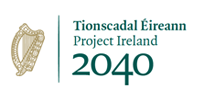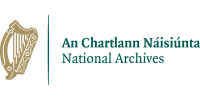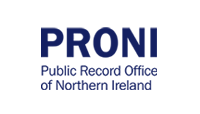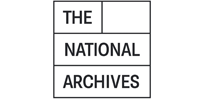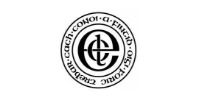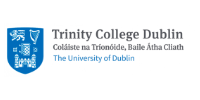

Irish Kings and English Rulers – Delving Deeper
Late-medieval Ireland was a contested space. Irish kings, their people and the settler English communities across the island clashed. Colonial power and Irish authority were in a constant state of tension, but they also mingled in a world of intermarriage and shared legal rights and customs.
The Manuscripts
Originally, any agreement made between an English ruler and an Irish king would have existed in multiple copies, with at least one copy for each of the two or more parties, which could be checked for accuracy if needed.
There were two main methods of ensuring accuracy – notarial instruments and indentures. A notarial instrument was drafted by a sworn notary public, and had his artistic design – the notarial mark – individual to him, and his personal testimony to say that it was genuine. The use of notaries may have been due to the influence of leading churchmen such as the archbishop of Armagh, primate of Ireland, in composing the agreements – notarial subscription lent additional legal force and spiritual sanction. An indenture was a large piece of parchment on which the text of the agreement was written twice, generally in Latin, sealed and then cut down the middle in a wavy or jagged, tooth-shaped line; if the validity of either party’s copy needed to be checked, the parts could be brought together, and if they matched both copies were legal.
Today, the text of the agreements between English rulers and Irish kings in the later middle ages can be found in a variety of sources, publications and archives, showing the continuing interest in these agreements through the centuries. At the core of the collection are the original parchment records now at The National Archives (UK), brought from Ireland and deposited with other diplomatic documents in the archives of the English king. The highest number of copies , which are essentially transcripts of the agreements and other correspondence, survive on the Memoranda Roll of the English Exchequer – the financial department of government at Westminster. Richard clearly wanted a full and permanent record. In the 1920s Edmund Curtis, Lecky Professor of History at Trinity College Dublin, published editions of some of these agreements with additional interpretation. His work prompted Myles V. Ronan to publish the text of an eighteenth-century copy of an indenture between the men of Thomond and Richard II from a privately-owned manuscript.
There are several other surviving agreements: in the fifteenth century, for example, an agreement relating to Ulster was copied into the register of John Mey, archbishop of Armagh, now held at the Public Record Office of Northern Ireland. In the seventeenth century, the antiquarians Robert Cotton and George Carew either acquired originals or had copies made of further agreements, which are now in the British Library and Lambeth Palace Library respectively. In 1611, a court case in Dublin referenced copies of the 1395 agreements then in the records of the Irish exchequer in the Bermingham Tower, Dublin Castle, but which were then lost before 1867. This case nevertheless demonstrates both the survival of copies in Ireland outside the medieval period and the antiquarian knowledge of and interest in their existence – a testament to their continuing fascination and importance.
Thirteen of the original instruments of agreement from the reign of Richard II have survived in the archive of the royal secretariat, the chancery, at The National Archives (UK). Despite their importance for Anglo-Irish diplomacy,
hey have suffered damage through the centuries through poor care, making them difficult to read. The ink has faded and the parchment has often been torn. However, thanks to cutting-edge conservation science, the documents have been photographed using Multi-Spectral Imaging, which picks up details that are not visible ordinarily by using a range of visible and invisible light (infrared and ultra-violet). With assistance from partners at Hampton Court Palace we were also able to test hyper-spectral imaging, which maps a document across the full range of light wavelengths to produce, we think, astounding results. You can see an example of how multi-spectral imaging made an indenture readable below and read more here.
This work was funded by The National Archives’ (UK) Strategic Research Fund Project Contesting Space, Contested Records in 2022-23. Our thanks to TNA and Lambeth Palace Library for allowing the use of their images, and to Constantina Vlachou-Mogire and Moira Bertasa at Hampton Court Palace for the use of their hyper-spectral imaging camera.
The Translations
The Virtual Treasury medieval team have gathered together translations of the disparate sources for these agreements under our own ‘born-digital’ repository for translations of medieval materials once stored in the Irish exchequer, MedEx. Here you can see the full listing of the agreements with their dates and a link to the translation in the Treasury. The code is formed by the year of the agreement and then the date order when there are more than one agreement from that year. Each MedEx 3 translation is then linked to the manuscript original in the relevant repository and most have images of the original available.
Where we have platformed the translations from the English memoranda roll of 1395 published in 1927 by Edmund Curtis in his Richard II in Ireland 1394-5. The Submission of the Irish Chiefs (Oxford: Clarendon Press), it is noted in the title. Curtis’s edition has been digitised on the Internet Archive, and by the National Library of Australia, and the texts are also available on Dr Margaret K. Smith’s Submission Strategies website. Because Curtis follows the order of the memoranda roll and we have followed the date order, to see the translations in the order he gives them, use the listing given under TNA E 159/171/Recorda/T.
